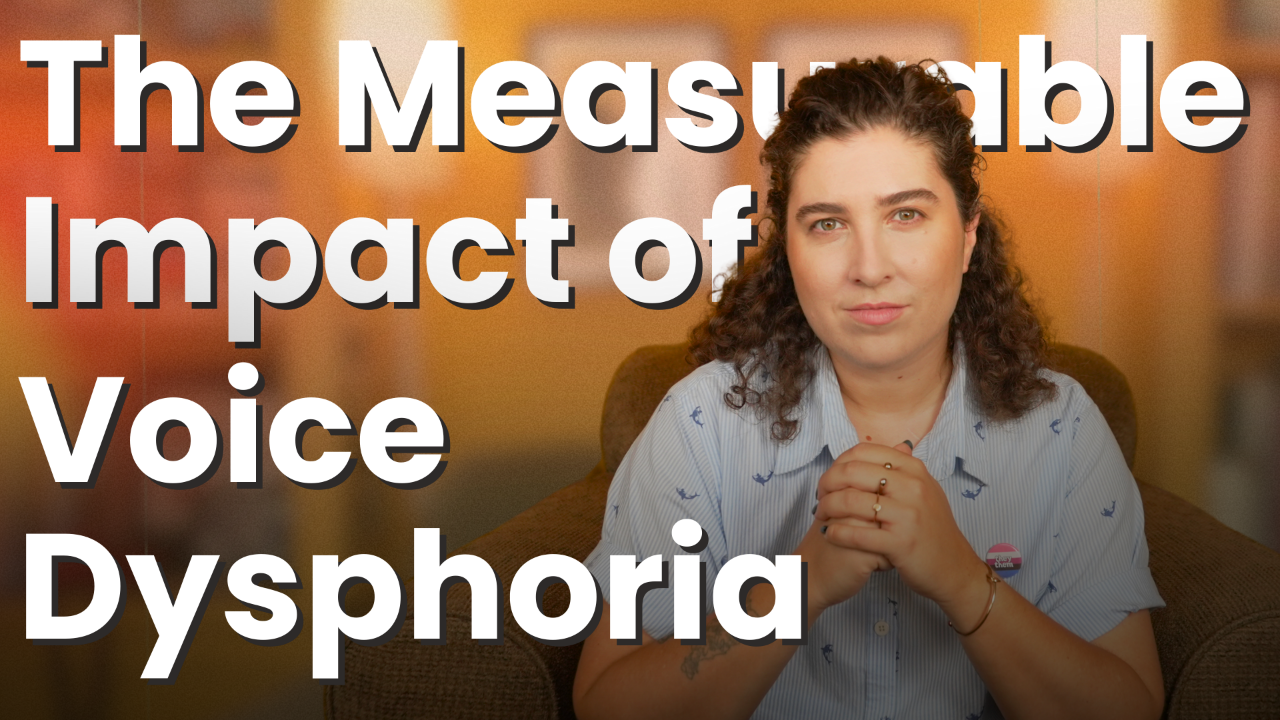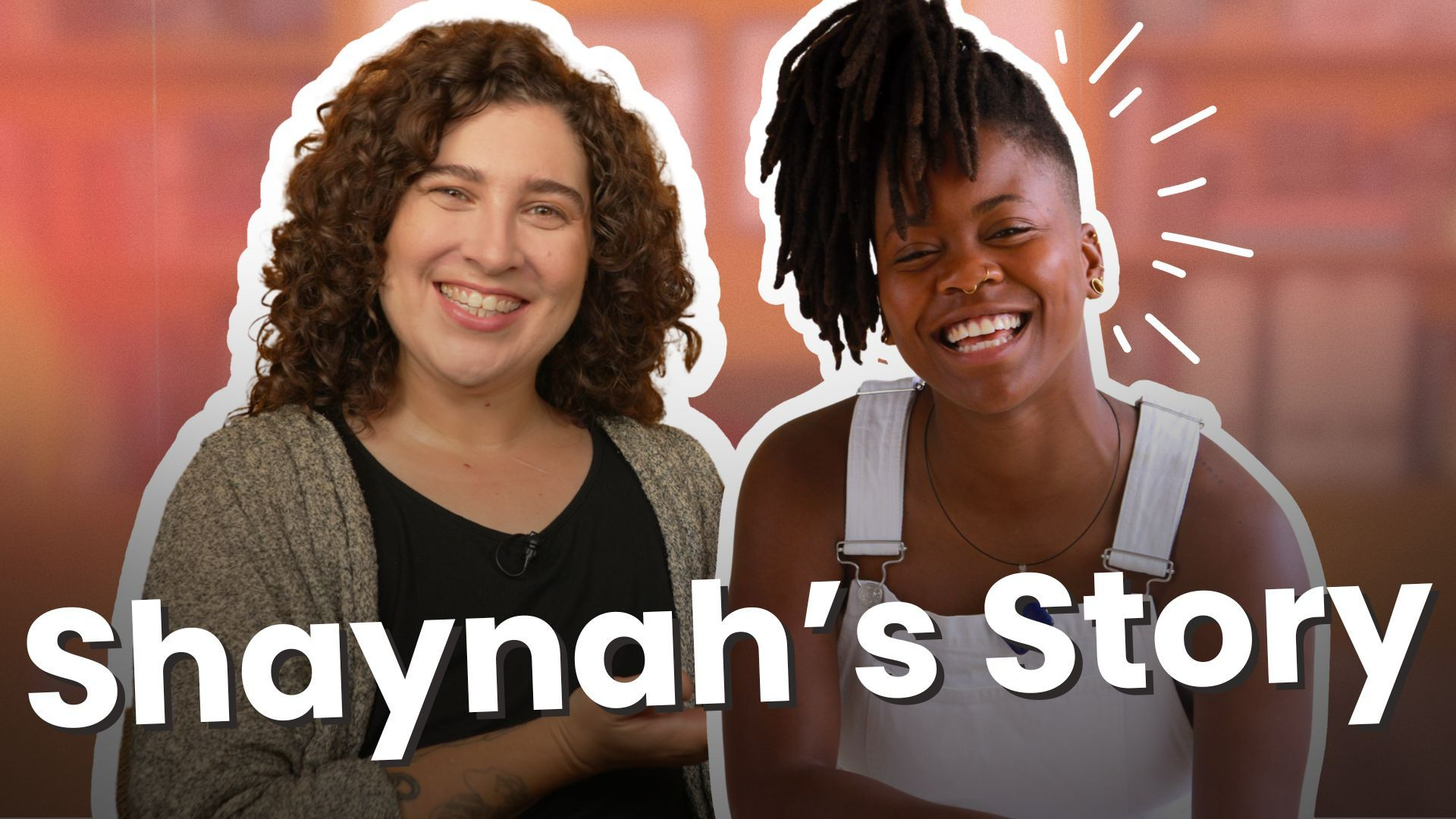The Multifaceted Nature of Gender Communication: Beyond the Sound of Your Voice
Aug 10, 2023
Hey there! I'm Renée, a gender-affirming voice teacher, and today, I want to delve into the fascinating world of nonverbal communication. Now, nonverbal communication might not be my primary area of expertise, but it's an important aspect to consider, especially because of its close ties to speech and gender expression.
Let's explore a few types of nonverbal communication together:
1. Kinesics: This category includes body movements and gestures, which can speak volumes about our identities and emotions. Now, body movements as they are related to gender are very culturally specific, but you maybe imagine the cultural codes of movement from your community.
2. Haptics: Touching behaviour can convey intimacy, comfort, and sometimes even power dynamics in communication. Think about the differences in hugging styles between friends and romantic partners. These variations in physical touch can reflect the depth of the relationship and the degree of emotional connection, but they can also reflect gendered codes.
3. Proxemics: The distance we maintain from others during conversations can reveal our level of comfort and the nature of our relationships. In some cultures, maintaining personal space during interactions is considered respectful, while in others, closeness may indicate trust and camaraderie.
4. Oculesics: The use of our eyes, such as eye contact and gaze direction, can significantly impact how we perceive and express gender. Eye contact is often considered a sign of attentiveness and sincerity, but its intensity and duration can differ depending on cultural norms and individual personalities.
5. Chronemics: The way we use time, our willingness to wait, and the speed of our speech can also be influenced by our gender identity. For instance, men might be socialized to speak more assertively and with a faster pace, while women might adopt a more measured and collaborative conversational style, depending on culture and context.
It's crucial to recognize that the gendered codes associated with these forms of nonverbal communication can vary significantly from one cultural context to another. As mentioned in the book Voice and Communication Therapy for the Transgender/Gender Diverse Client, no single universally applicable gendered communicative system exists. Instead, these systems are deeply rooted in specific communities and contexts, making them highly nuanced and fluid.
"To date, no one has successfully described a globally applicable gendered communicative system as such, likely because these systems are even more community-dependent and context-dependent than the use of largely predetermined physiological structures, [like pitch and resonance]"
So, if you're interested in leveraging nonverbal cues to reinforce your gender expression, it's essential to observe and understand how people of your gender in your cultural context use these codes. Embrace the rich diversity of nonverbal communication and make it work for you!
Now, I must clarify that this practice of learning different codes of communication isn't exclusive to transgender individuals. In fact, we all engage in it, sometimes unknowingly. For example, a quick Google search led me to a video of a guy teaching his dad how to "dap him up." These unique nonverbal cues, often passed down through generations, serve as a form of cultural communication that unites us and shapes our identities. Although in this particular case, it could be considered cultural appropriation, since while it is a popular American greeting, it originates with Black service members in the Vietnam war.
In different parts of the world, you might encounter fascinating nonverbal customs that convey gendered messages. For instance, in some Middle Eastern cultures, men may greet each other with a kiss on the cheek, a gesture that signifies closeness and friendship. On the other hand, a firm handshake might be more common in the United States and Canada.
In Asian cultures, bowing is a traditional way to show respect and humility, regardless of gender. However, the depth of the bow and the duration can subtly convey different meanings, such as acknowledging seniority or expressing sincere apologies.
I'm genuinely curious about your experiences! In the comments below, please share some gendered codes of nonverbal communication from your corner of the world. It would be incredible to learn about the various expressions and customs that enrich our understanding of communication across cultures!
Remember, nonverbal communication is a complex and dynamic aspect of human interaction. It goes beyond merely altering the pitch and resonance of our voices. Understanding and embracing the diverse forms of nonverbal communication can enhance our ability to express ourselves authentically and connect with others on a deeper level.
In conclusion, let's celebrate the vast spectrum of nonverbal cues that contribute to our gender expression and cultural identities. Whether it's a warm hug, a knowing glance, or a unique handshake, each gesture carries a piece of who we are. So, let's keep an open mind and continue exploring the boundless ways we communicate our gender to the world.
Thanks for joining me today! Until next time, stay true to yourself and keep communicating with authenticity and compassion!
Want weekly tips, resources, and insights on trans voice training? Sign up for my newsletter and get the latest content delivered straight to your inbox. It's free!









